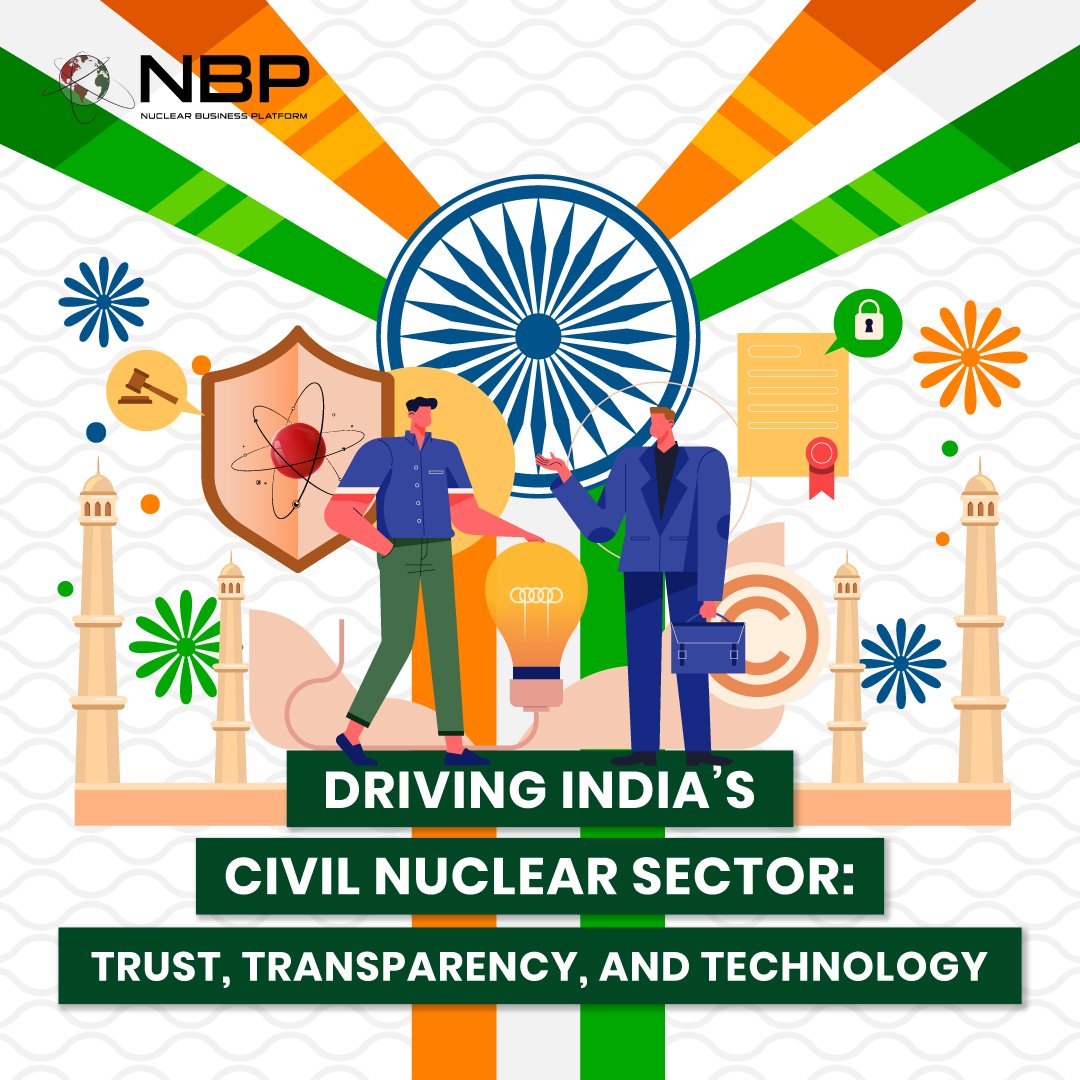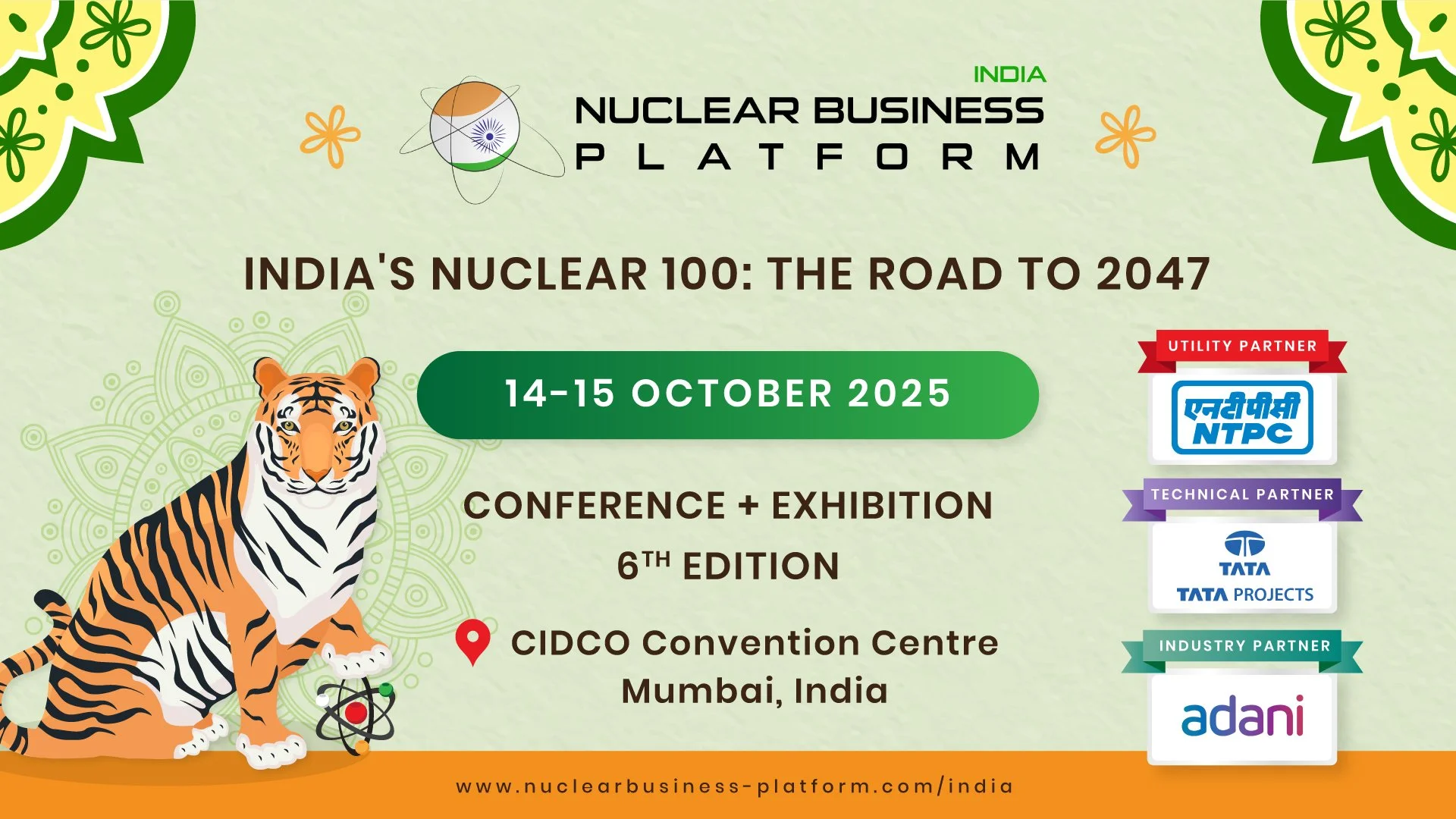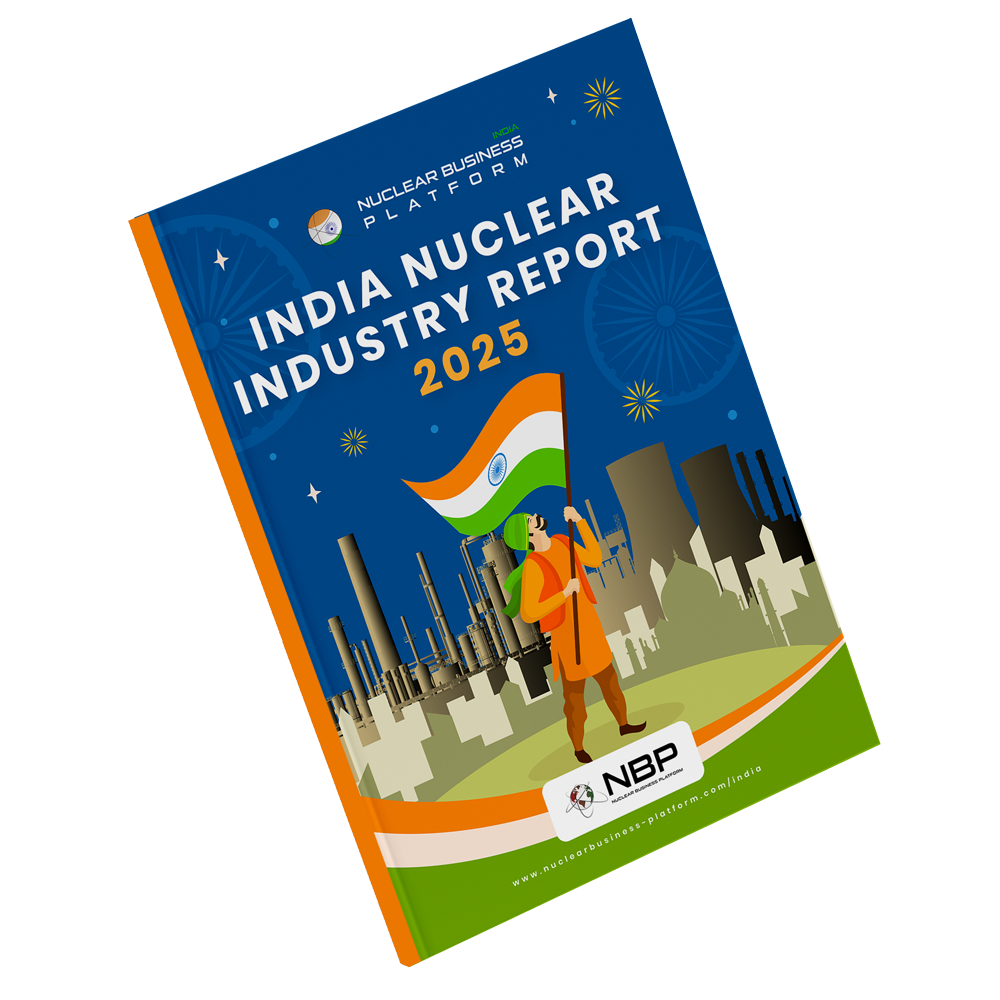Driving India’s Civil Nuclear Sector: Trust, Transparency, and Technology
India is working steadily toward its goal of achieving 100 GW of nuclear power capacity by 2047, supported by legal reforms, technological innovation, and strategic investments. As these efforts gain momentum, it is important to recognize that public trust and engagement will play a defining role in ensuring smooth implementation. While clear frameworks for stakeholder communication exist, the pace and scale of upcoming developments make it essential to reinforce these efforts further. Here we examine how public engagement can directly influence the success of nuclear projects, and why building and maintaining trust must remain central to India’s nuclear energy roadmap.
Why Public Trust Must Keep Pace with India’s Nuclear Reforms
India is laying the foundation for a historic transformation in its nuclear energy sector. From high-stakes policy reforms to technology investments, the government is making it clear: nuclear energy is central to the country's long-term clean energy strategy.
Key legislative amendments—such as the proposed changes to the Atomic Energy Act of 1962 and the Civil Liability for Nuclear Damage Act of 2010—are underway to end state monopoly and open the sector to private Indian firms and foreign partners. Plans to permit phased foreign direct investment of up to 49% signal the government's intent to unlock capital and bring in global expertise.
India is also betting big on next-generation technology. With a Rs.20,000 crore allocation for R&D, the country aims to have at least five indigenously designed Small Modular Reactors (SMRs) operational by 2033. The public-private partnership model—where companies invest in return for clean, affordable power—is already gaining traction, drawing interest from industrial leaders like Jindal Nuclear, Reliance Industries, Adani Group, Tata Power, and Vedanta. In parallel, 6,000 MW of nuclear capacity is under construction, with an additional 8,000 MW planned.
Yet despite all this progress, India’s nuclear ambitions could face serious setbacks without strong public trust. Across the world, public resistance has delayed or derailed nuclear projects—and India is no exception. Protests have stalled projects in places like Kudankulam and Jaitapur, proving that technical expertise and capital investment alone are not enough.
As Brenda Pagannone, an expert on stakeholder involvement at the IAEA’s Nuclear Power Engineering Section, warns: “Stakeholder involvement is recognized as a crucial process for the success of any nuclear power programme. Failing to effectively engage with stakeholders such as policy- and decision-makers, media, community members, and the public in general can have negative consequences.”
Delays driven by shaken public trust are not just bureaucratic hurdles—they are costly for operators, frustrating for policymakers, and damaging for communities still waiting for reliable electricity. Without proactive, transparent, and inclusive public engagement, even the most promising nuclear strategy can be undermined at the grassroots level.
Lessons from the Past: Kudankulam and Jaitapur
India’s nuclear journey offers critical lessons on why public trust and transparency are not optional—they're essential. Two of the country’s most high-profile nuclear projects, Kudankulam in Tamil Nadu and Jaitapur in Maharashtra, illustrate how a lack of strategic public engagement can slow progress and stall potential.
1. Kudankulam, Tamil Nadu: This project, which could have brought significant energy security and regional development, was marred by delays stemming from local opposition. Concerns—largely driven by fear of the unknown and perceived gaps in transparent communication—ignited sustained protests. As a result, the cost of the first two units ballooned from Rs. 13,171 crore in 2001 to Rs. 22,462 crore by 2014. The project eventually moved forward, but not without costly setbacks that could have been avoided through early and open dialogue with the community. Had public concerns been proactively addressed, Kudankulam could have served as an earlier catalyst for clean power and economic growth in the region.
2. Jaitapur, Maharashtra: Envisioned as the world’s largest nuclear power park, the Jaitapur project has been stalled for over a decade. Local opposition—rooted in worries about ecological impact, livelihoods of farmers and fishermen, and the use of unproven reactor technology—has kept the project from advancing. Yet, if realized, Jaitapur could bring transformative benefits: thousands of megawatts of clean energy, job creation, and economic uplift for the surrounding region. What’s held it back is not technology or financing, but a gap in trust—a gap that could have been bridged with more inclusive engagement, scientific communication, and a transparent project roadmap.
3. Mithi Virdi, Gujarat: Once seen as a flagship outcome of the Indo-US civil nuclear agreement, the Mithi Virdi project could have marked a turning point for nuclear power in western India. The 6,000 MW facility had the potential to deliver long-term energy security while boosting local economic activity and infrastructure. However, strong local opposition—centered on land acquisition concerns and skepticism about the project’s Environmental Impact Assessment (EIA) process—led to its cancellation and eventual relocation. The case reinforces the fact that even high-level diplomatic and strategic momentum cannot substitute for effective public engagement. Had the local population been meaningfully included in the planning process from the start, Mithi Virdi might have become a model for regional prosperity through clean energy.
These examples reveal a clear message: when the public is left in the dark, fear fills the void. But when people are treated as stakeholders—not obstacles—nuclear projects stand a far greater chance of success. With the right engagement, regions like Kudankulam and Jaitapur wouldn’t just host nuclear facilities—they’d thrive because of them.
Effective Ways to Build Public Trust in Nuclear Projects
Drawing from global best practices and international standards, here are few proven strategies that can help create meaningful and lasting public engagement in India’s nuclear journey:
Ensure Independent Oversight and Transparent Project Management: Public confidence hinges on how independently and safely a nuclear project is managed. The World Association of Nuclear Operators (WANO) recommends robust independent oversight systems to ensure objective safety assessments across the organization. Meanwhile, the IAEA emphasizes the importance of a transparent and well-managed project development plan, as this can foster public trust from the outset by showcasing strong leadership and accountability.
Establish Visitor Centres and Regular Community Interaction: Engagement must be visible and accessible. Creating visitor centres at proposed nuclear sites, as suggested by Robert Holy, Head of Nuclear Communication at Slovenské elektrárne, serves as a vital first step. These centres can offer communities a hands-on understanding of nuclear science and safety. Holding regular community meetings further strengthens two-way communication, allowing concerns to be addressed directly and constructively.
Use Stakeholder Mapping for Tailored Communication: Not all stakeholders are the same—and they shouldn’t be treated as such. Stakeholder mapping helps identify diverse community groups and categorize their levels of interest and influence. Once identified, tailored communication methods—including newsletters, in-person briefings, social media, and traditional media outreach—can ensure that the message is clear, credible, and relevant to each group.
Innovate Risk Communication with Social Science: Public concerns around nuclear projects are often emotional, deeply rooted, and socially complex. To respond effectively, vendors and operators must go beyond basic surveys and adopt social science-based risk communication strategies. These should aim to understand the values, concerns, and preferences of communities—and keep the conversation alive throughout the entire lifecycle of the plant, not just during construction.
Embed Public Engagement into the R&D Process: Public trust must be embedded not just in communication—but in the innovation process itself. Integrating socio-technical approaches into nuclear research and development (R&D) means inviting public perspectives from the very early stages of innovation. National institutions, such as the Department of Atomic Energy, should broaden their programs and budgets to include social science research alongside engineering and physical sciences.
Follow the IAEA’s Five Key Principles of Engagement: The IAEA provides a robust framework for engagement through its Five Key Principles: build trust; ensure accountability; promote transparency; engage in early and continuous dialogue; and clearly communicate both benefits and risks.
Adopt Consent-Based Siting with Community Participation: When siting new facilities, especially in rural or ecologically sensitive areas, a consent-based approach is essential. This involves participatory site selection processes, fair compensation, funding for independent technical analysis, and genuine partnerships with local communities. While this approach may require more time and resources, it dramatically increases the chances of successful and sustainable project implementation.
Hence, as India progresses toward its 100 GW nuclear power target, public trust remains a cornerstone of success. The path ahead will not be determined by technology and investment alone, but by how effectively the country continues to engage its citizens and local communities. Transparent communication, inclusive planning, and long-term relationship-building are essential to prevent avoidable delays and build lasting support. As Brenda Pagannone of the IAEA rightly notes, “Openness and transparency, and understanding that the purpose of stakeholder involvement isn’t always about gaining complete public acceptance,” she emphasizes, “Rather, its aim is to help people understand the rationale behind the competent authorities’ decisions.”
Moving forward, a key milestone in this journey will be the 6th India Nuclear Business Platform (INBP) 2025, scheduled for 14–15 October in Mumbai, where policymakers, global stakeholders, and industry leaders will gather to define the next phase of India’s nuclear roadmap. The future of nuclear energy in India will ultimately depend not just on infrastructure, but on the confidence it builds among its people.



